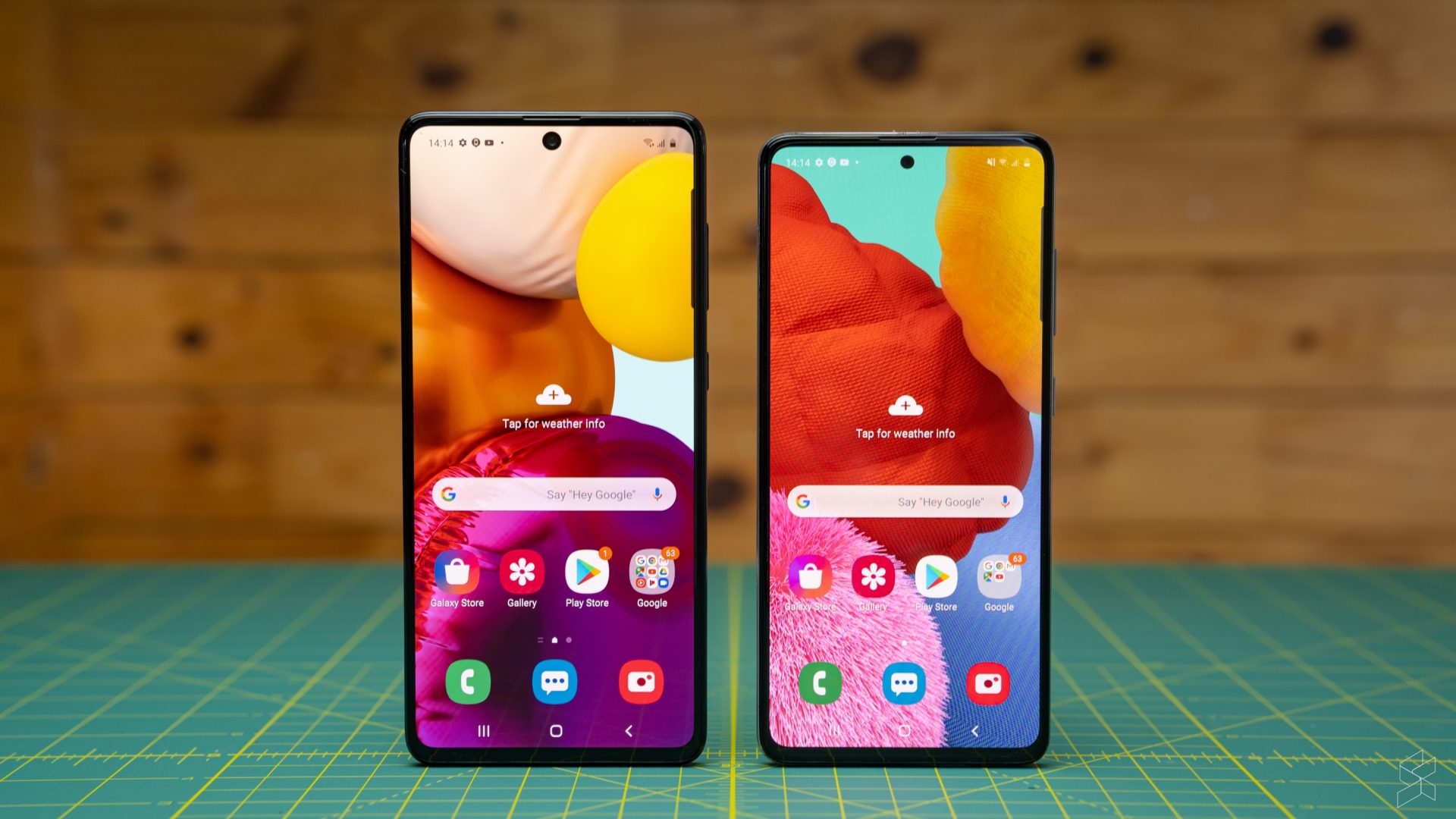
Samsung Galaxy A51 & A71 first impressions: Applying the secret sauce
by Rory LeeIn the past, it was always a little hard to recommend mid-range Samsung smartphones. Despite being the largest smartphone maker in the world, with a wealth of products across pretty much every price point and major market, Samsung’s affordable devices always scored poorly on the price-to-performance scale.
Then, we saw what I like to call Samsung’s mid-range renaissance, and the company started pushing out what was–at least, on paper–quality affordable devices that could almost go head-to-head with some of the best. And since that, they’ve evolved them even further, and to start off the new decade, we’ve got two brand-new entries in the form of the Samsung Galaxy A71 and Galaxy A51.
Normally, at this point I’d give you a quick rundown of what Samsung thinks are their new device’s biggest strengths…then proceed to tear that apart and analyse it. But, if you’ve been on the internet lately, you probably already have a good idea of what they are thanks to Samsung’s incredibly catchy jingle.
Awesome screen, awesome camera, long-lasting battery life.
So, I guess the best place to start this first impressions would be with those three things.
Awesome screen
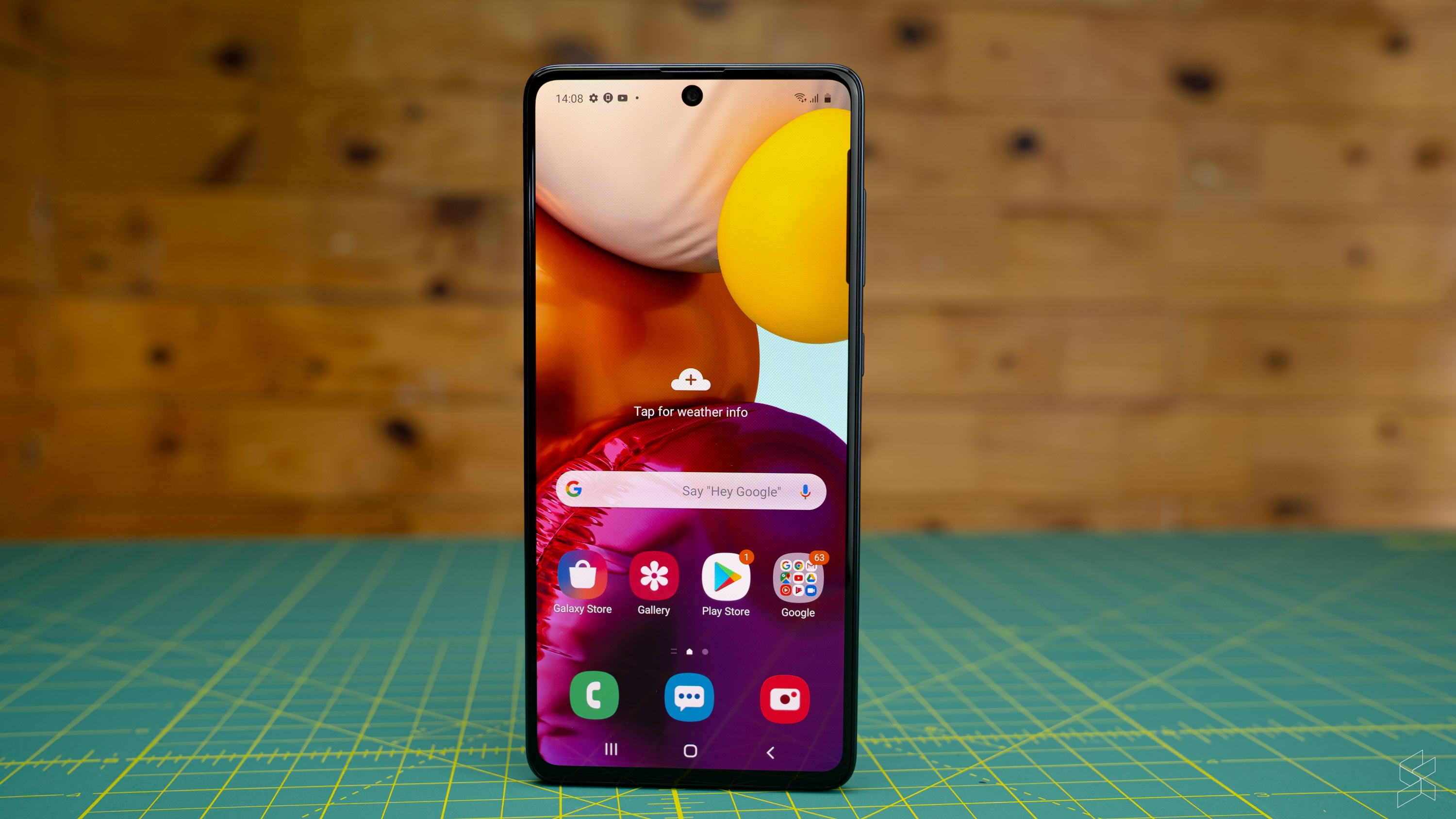
Okay, this first part, I can vouch for. From my brief time with these handsets, they certainly have very solid displays, but I guess that’s not that surprising since both of them come equipped with flat Full HD+ Super AMOLED Infinity-O screens. The only difference between them is that the one on the A71 is 6.7 inches while the one on the A51 is 6.5 inches.
They’ve got good viewing angles for an AMOLED panel, are more than sharp enough, and come with an OLED’s patented pop of vibrance and contrast. Definitely a more satisfying experience than your run-of-the-mill LCD panel on your average affordable handset. Since it’s an Infinity-O panel, you get a tiny cutout in the middle of the screen for the selfie camera, which I think is in the most unobtrusive spot you could put something like that.
I had no issues with them while gaming or watching content, but that could also just be because I’ve gotten used to pretty much every phone having some kind of obstruction at the top of the panel.
Awesome camera

This though, I can’t really say I agree. But, it’s not because I think the A71 and A51 have terrible cameras–it’s just that awesome is a pretty strong word to describe what I would say are decent mid-range smartphone cameras.
Both phones pack quad cameras at the back, with the same kind of layout, but with one key difference: their wide-angle main camera. On the Galaxy A71, you’ll find a 64MP f/1.8 wide-angle main camera, while the Galaxy A51 packs a 48MP f/2.0 wide-angle main camera instead. That main shooter, however, is augmented with the same set of cameras. You’ve got a 12MP f/2.2 ultra-wide camera, a 5MP f/2.2 depth camera and a final 5MP f/2.4 macro camera.
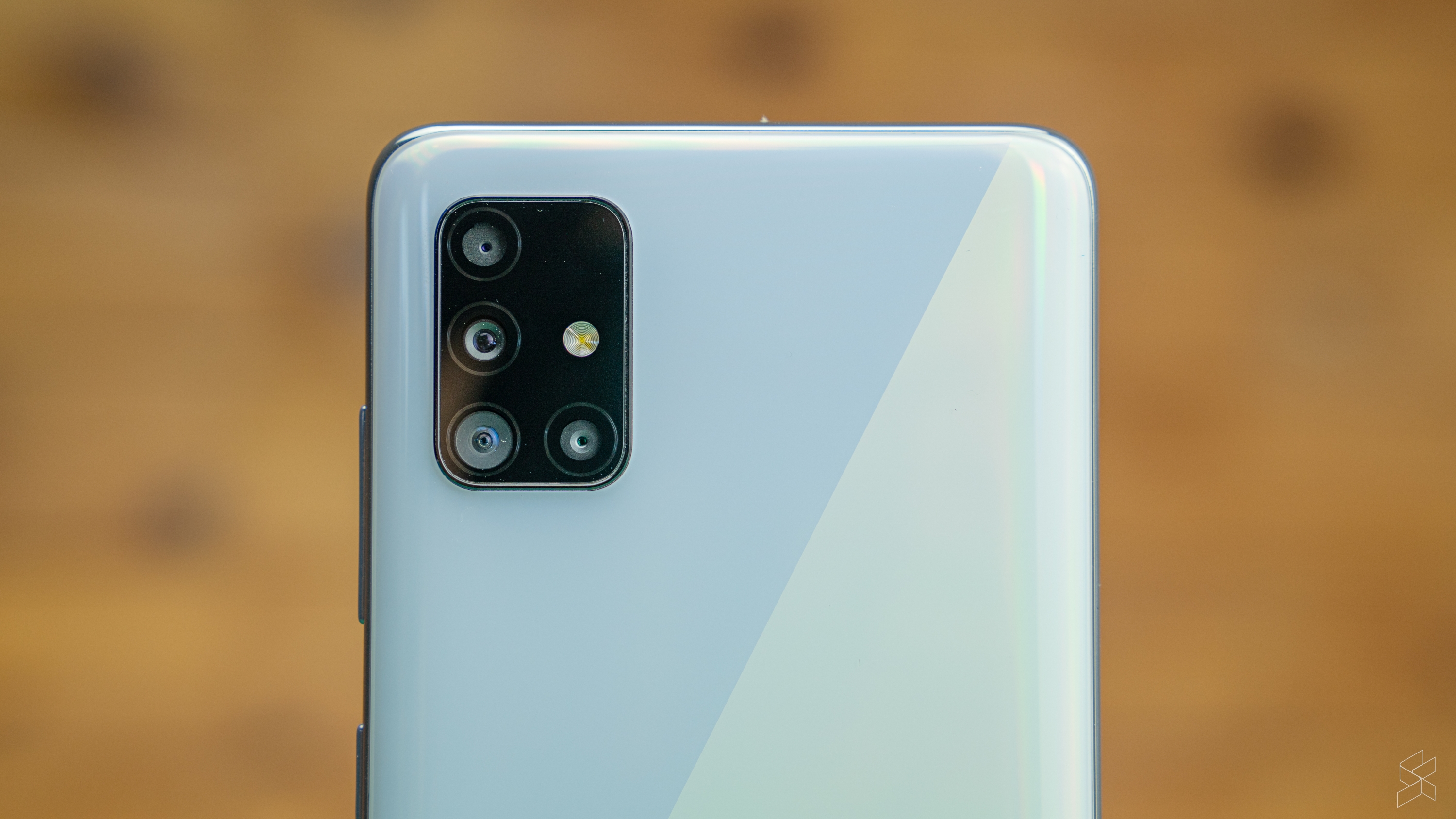
Now, when it comes to a mid-ranger’s camera, what I generally expect is that it’s able to put up a strong performance when you’ve got a well-exposed scene, but not such a strong showing when the going gets dark. And in my time with the Galaxy A51 and A71, I have to say that they absolutely lived up to those expectations.

Daylight shots here frankly look really good. I shot these with the Scene Optimiser turned on and I have to say I was pretty happy with the results. As a whole, the highlights and the shadows were well tamed, the images look vibrant and overall pretty sharp. In fact, it has a distinct Samsung quality to them that anyone who’s shot with a Galaxy S10 or Note 10 will probably recognise. Was there a huge difference between the 64MP and the 48MP? I have to say, not really. In fact, in some of these scenes, I actually prefer the one from the Galaxy A51 because the A71 had a green tint to it that wasn’t particularly attractive.
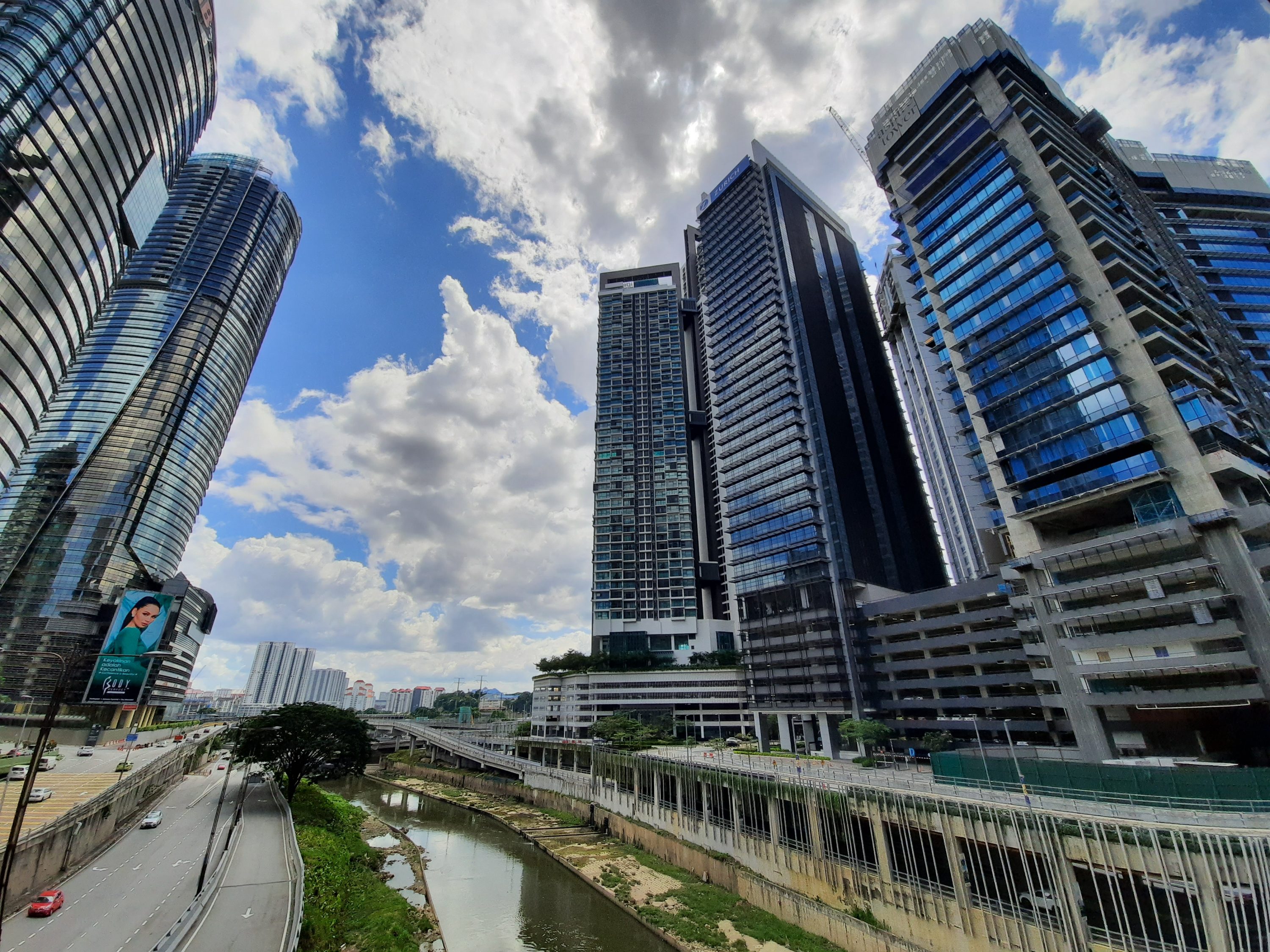
I was particularly impressed with the ultra-wide camera. Compared to what I experienced on last year’s Galaxy A50, this is a marked improvement in both colour accuracy, clarity and its ability to take a similar enough photo to the main camera that you could almost use them interchangeably.

That being said, once the going gets even a little bit dark, well, its almost like a Vampire’s had its way with your images because they lose so much colour. But, I have to say that noise is handled pretty well and it’s still rather sharp. And, if you’re shooting indoors towards a bright outdoor scene, the phone’s HDR simply cannot keep up. Look at how it compares to something like the Xiaomi Mi Note 10.
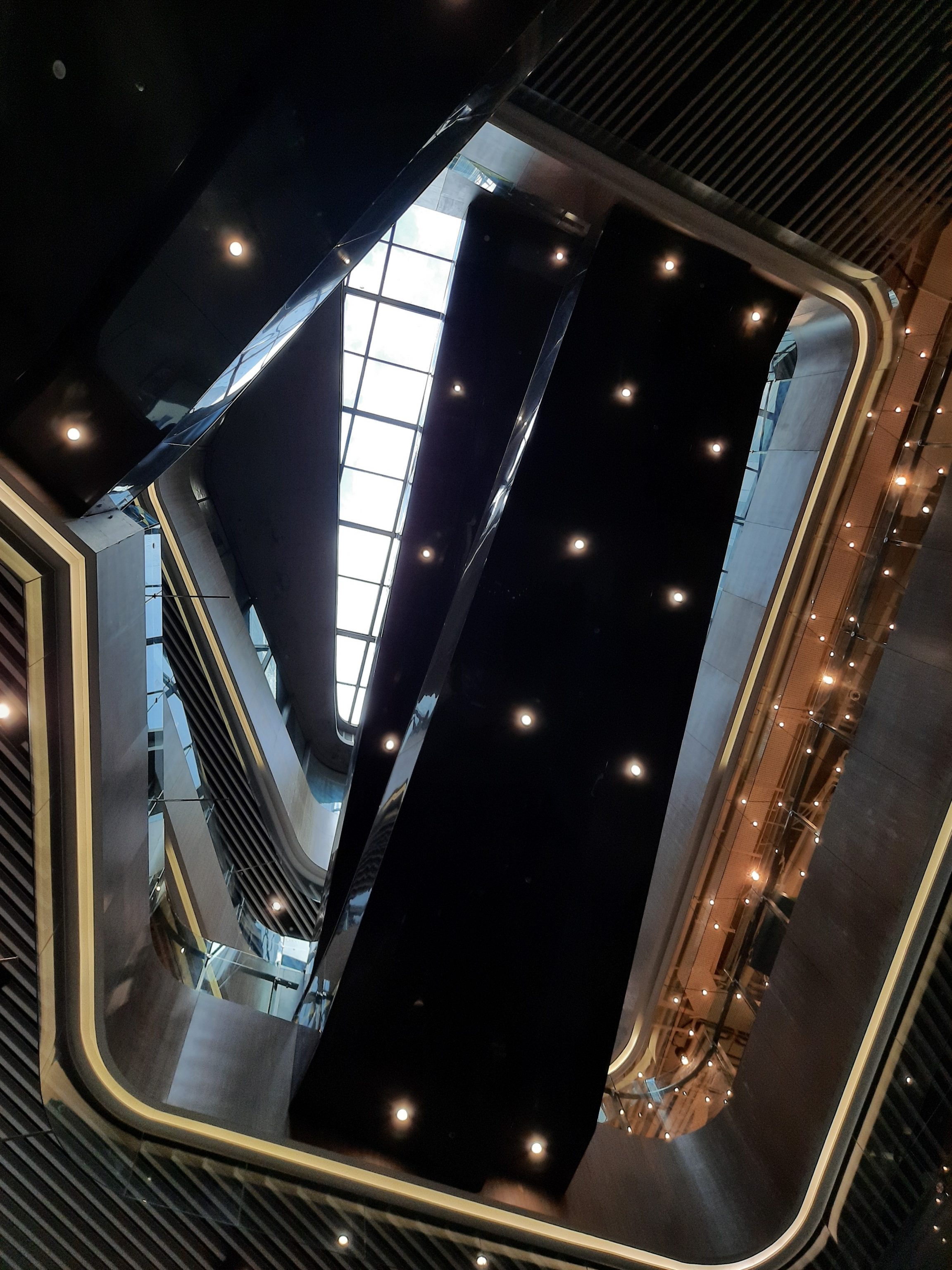
I was also underwhelmed by the duo’s Live Focus photos as they tended to turn my subjects pale and a little pasty.

I did, however, like the quality coming out of the 32MP selfie shooter. With beauty fully turned off, it looks like the camera actually turns off all beautification (unlike some Chinese smartphones). It absolutely nails my complete lack of proper eyebrows.

I do prefer the skin tone on the Galaxy A51 a little more though.
Long-lasting battery life
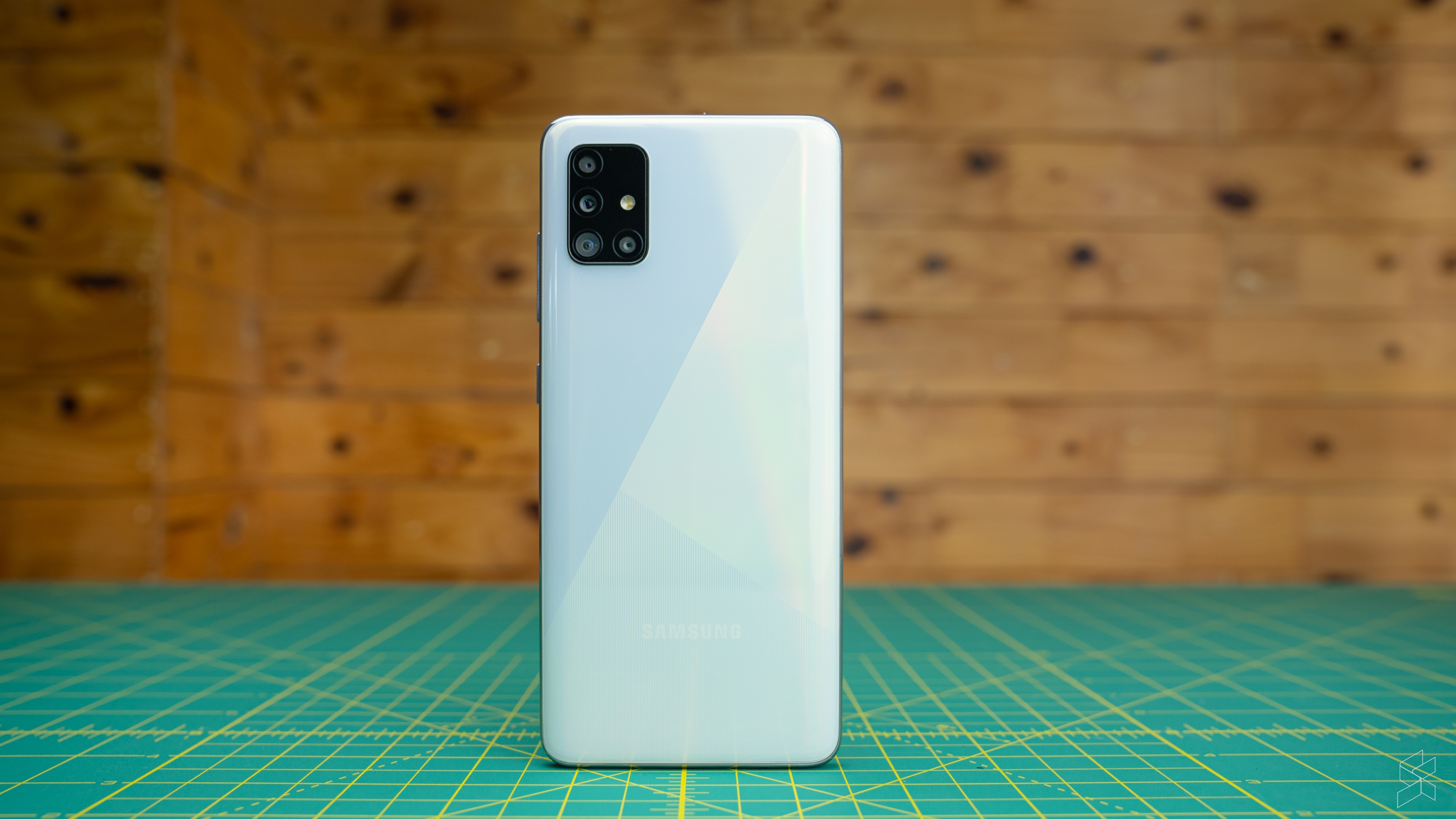
Finally, I was not able to thoroughly test this part. I only got to spend a short amount of time with the handsets, so I wasn’t able to put it through my usual gauntlet of tests. That being said, the numbers here look pretty good as the A51 comes with a 4,000 mAh battery while the A71 packs a 4,500 mAh cell instead.
Plus, both phones come with support for fast-charging via a USB-C port. On the Galaxy A51, you have access to 15W fast charging while the Galaxy A71 gets Samsung’s Super-Fast 25W fast charger. However, neither device supports wireless charging, as is to be expected.
So, instead of talking about the battery, let me take this opportunity to talk about the handset’s performance instead, and although they both look practically identical, on the inside they’re anything but.
With the Galaxy A51, you’ve got an Exynos 9611 processor mated to 6GB of RAM and 128GB of internal storage (expandable via microSD). On the other hand, the Galaxy A71 packs a Qualcomm Snapdragon 730 processor with 8GB of RAM and 128GB of internal storage (also expandable via microSD).
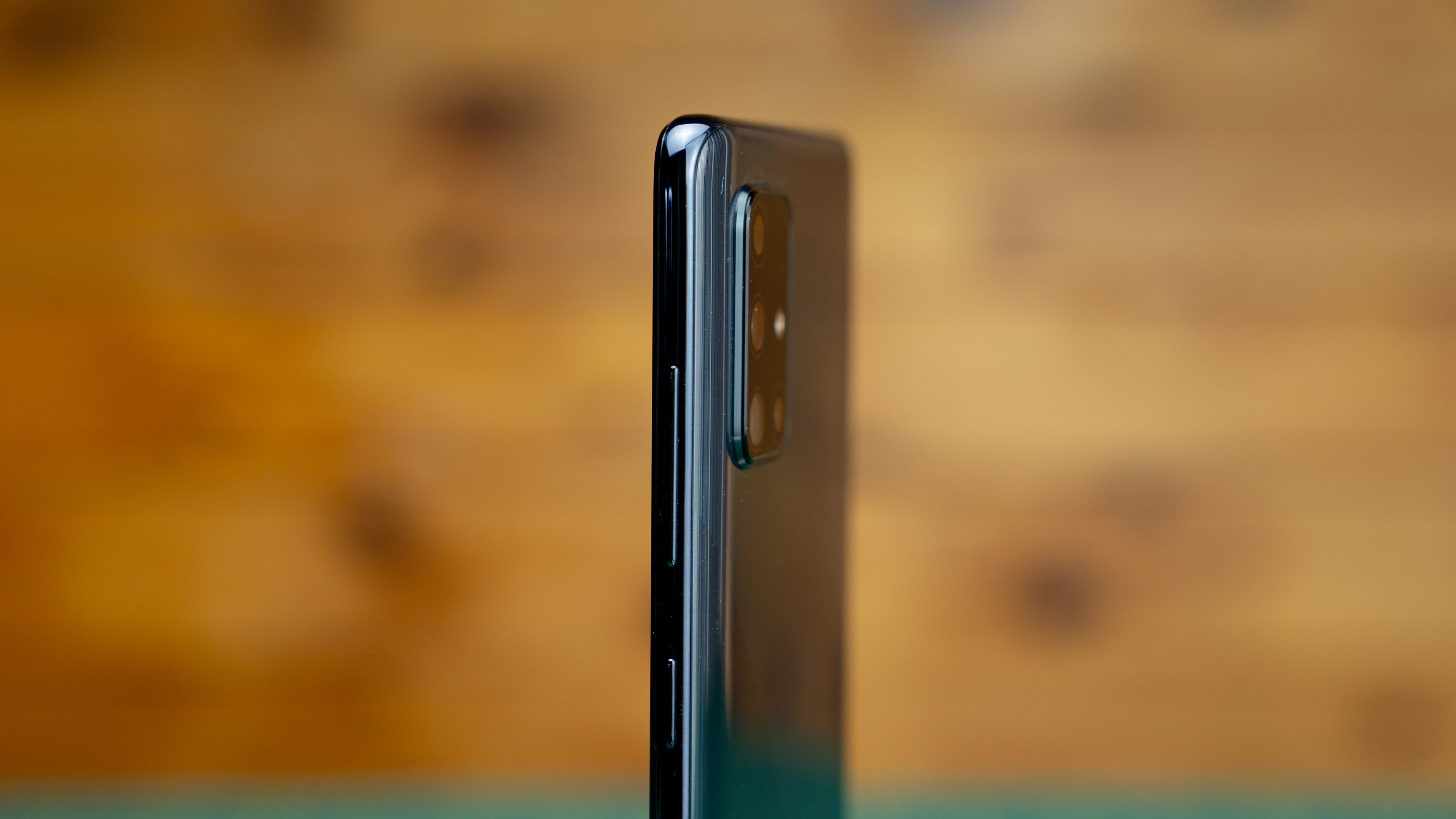
When I first saw the duo, it reminded me of the time I pitted the Galaxy A50 with the Xiaomi Mi 9T. In that comparison, the Mi 9T kicked the Galaxy A50’s butt in the gaming test, so it was actually pretty cool to see the Galaxy A51 almost hold its own against the Galaxy A71 this time around.
I was able to get playable FPS in COD Mobile at the highest graphics settings on the Galaxy A51, but the larger Galaxy A71 was definitely the smoother of the two. While in regular day-to-day usage, the Exynos 9611 is pretty smooth, it still can’t keep up with Qualcomm’s Snapdragon 730 when you start gaming on it. But, one nice thing is that neither device got uncomfortably warm even after an hour of continuous gaming.
Speaking of how they feel in your hand, I can confirm that these phones feel decidedly like a modern Galaxy A. Sure, it’s got a new pattern on its glossy back, but the phones still have that super light and thin profile in your hand.
The secret sauce
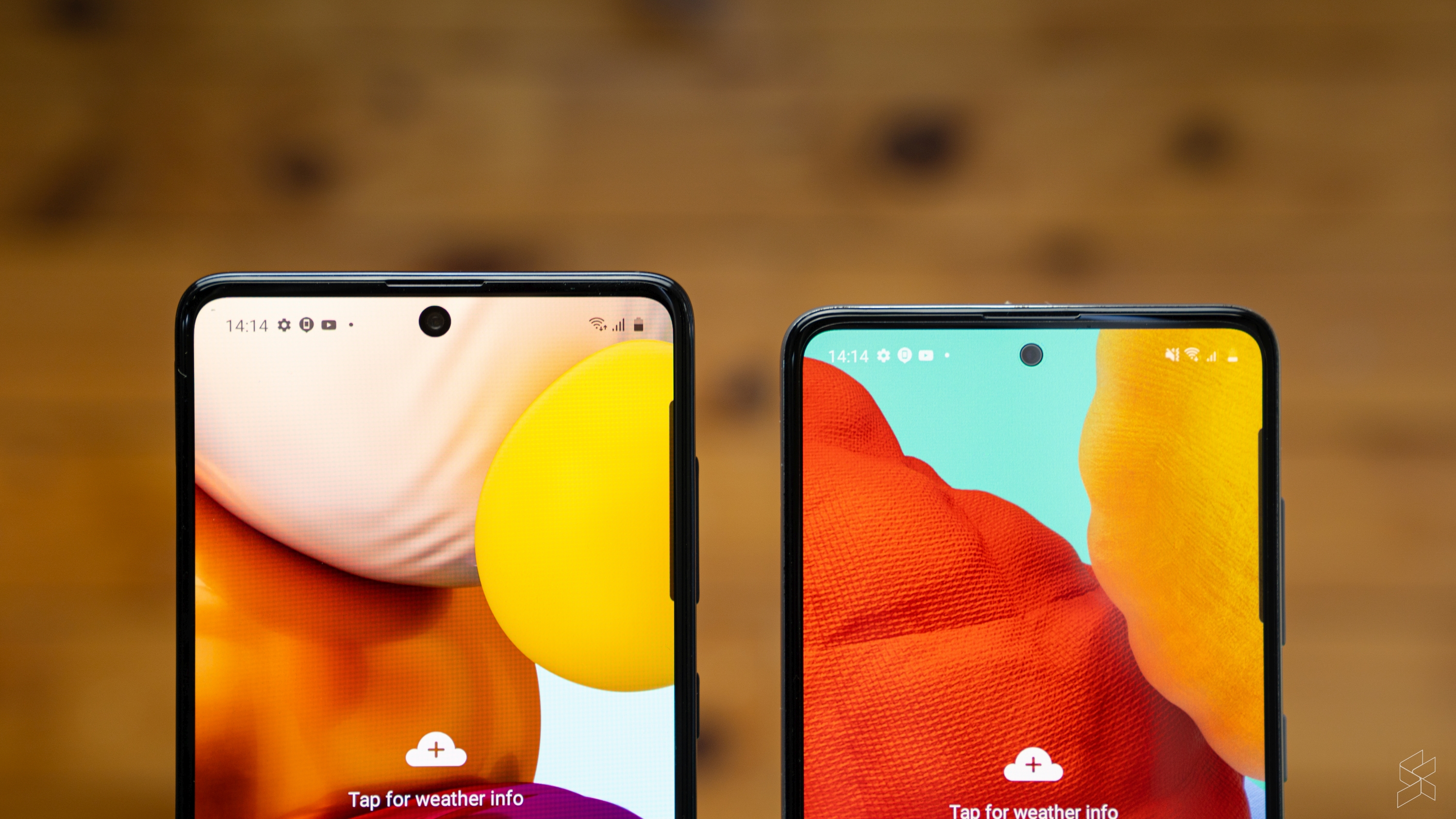
So, for the most part, these feel like slightly better versions of their predecessors, which is to be expected from what I would consider a scheduled update. But, that’s not necessarily a bad thing, because this also means that this smartphone comes with stuff that only a major smartphone maker like Samsung can provide: ecosystem benefits.
On top of access to Samsung’s ecosystem of apps like Bixby (and its goodies, whether you like it or not) Samsung Health, and the security offered by Samsung’s Knox, you also get access to my favourite Samsung feature, Samsung Pay. Sure, it is just the NFC version of Samsung Pay, but I find myself using this app mostly at contactless payment terminals anyway, so it’s not a huge difference for me.
However, with a phone in this class, the most important discussion to be had is (and will always be) about the price. And when we talk about the price, well, let’s just say that Samsung has made making a decision a little harder.
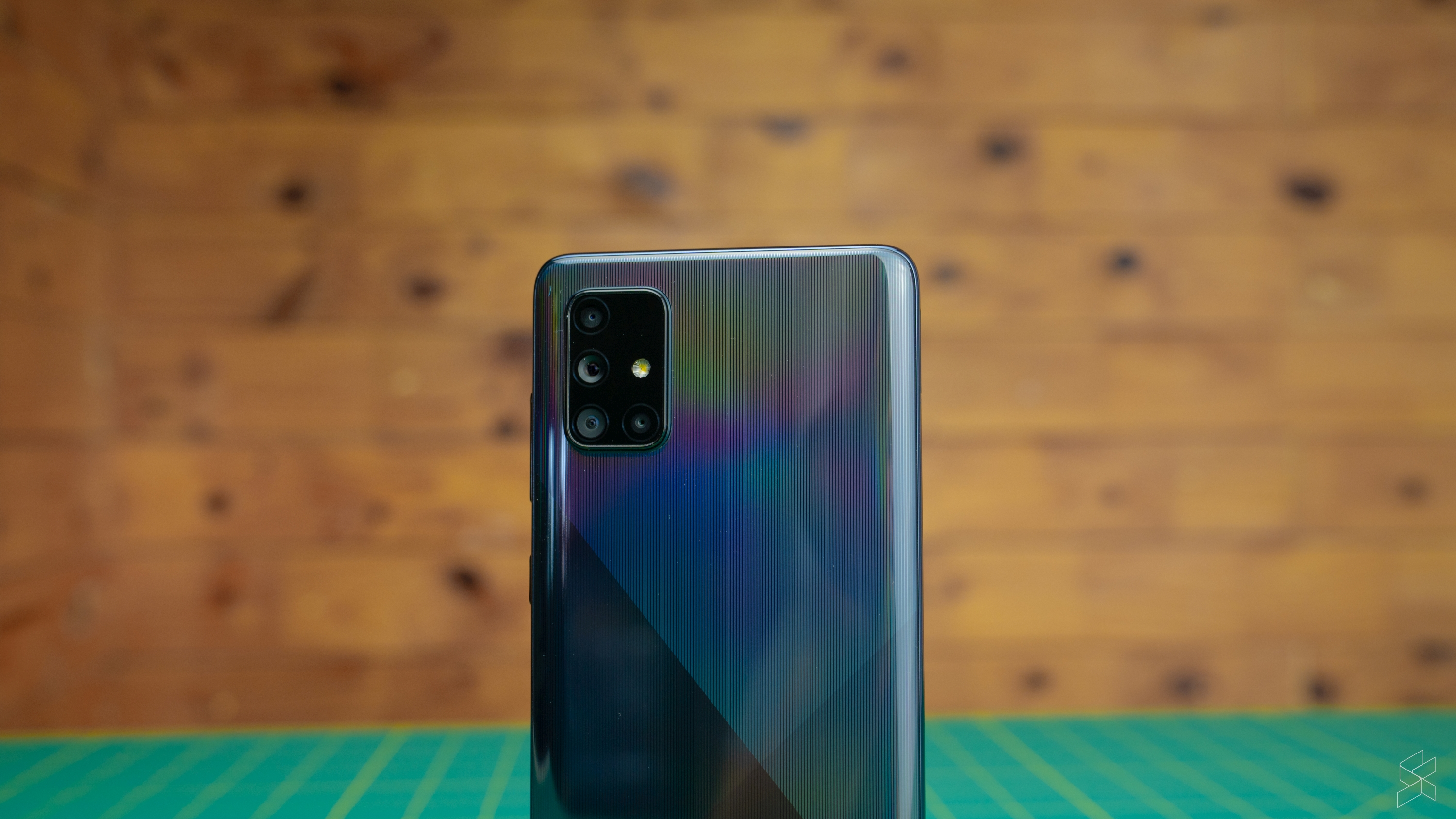
Samsung’s Galaxy A51 is priced at RM1,299, while the Galaxy A71 is priced at RM1,799. Now, the Galaxy A51’s launch price has remained unchanged from its predecessor the Galaxy A50s, which I guess is a good thing because you’re getting more smartphone after all. However, the interesting thing is that the Galaxy A71 is launching for RM200 less than the Galaxy A70.
Granted, the Galaxy A70 had a price tag that was pretty hard to swallow, but shaving RM200 off its launch price does mean that Samsung is heading in the right direction. That said, if you compare it to the other phones in this price range, like the Honor 20 Pro (RM1,999, Lazada, Shopee) and the Xiaomi Mi 9T Pro (RM1,599, Lazada, Shopee), those phones comprehensively beat the Galaxy A71 in the specs department with their flagship-class processor. But, those devices don’t have Samsung’s exclusive ecosystem, and I personally prefer the Galaxy A71’s Android skin over the other two. And the same can be said for the Galaxy A51 too.
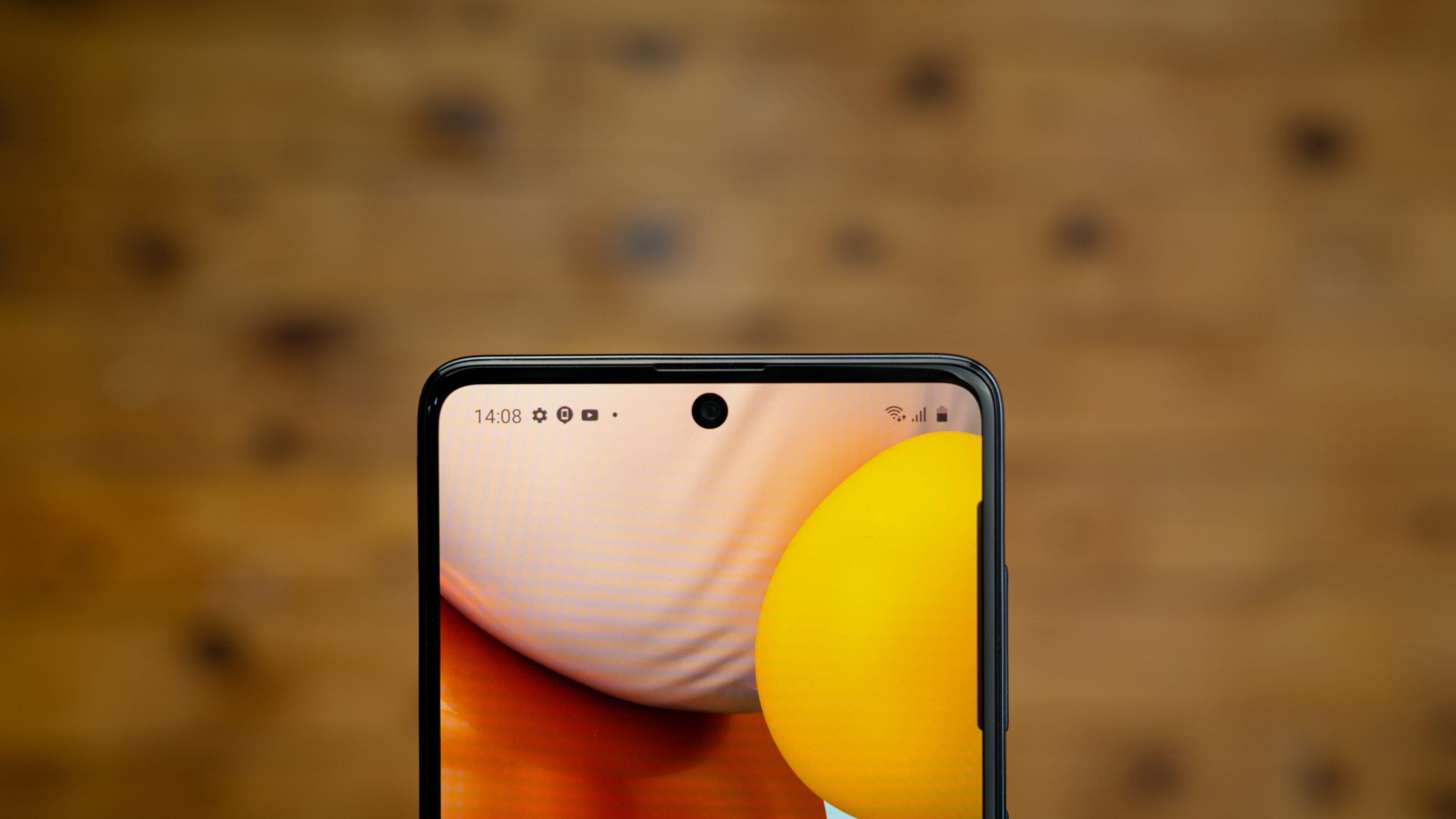
So, although Samsung has not undercut their competition in the performance-per-ringgit department, they’ve made the gap close enough that their devices now look a lot more attractive. Especially to someone who likes the Samsung-exclusive features they’ve built into the handsets.
That means, if you’re purely a spec-hunter, I think you’d be better off with an awesome bang-for-buck smartphone from the wildly popular Chinese brands in this space. But, if you care more about Knox security, Samsung Pay and the Samsung ecosystem, you won’t look ridiculous for picking up a Galaxy A51 or a Galaxy A71 anymore.
Photography by Raywen Ong on the Sony A7 III.